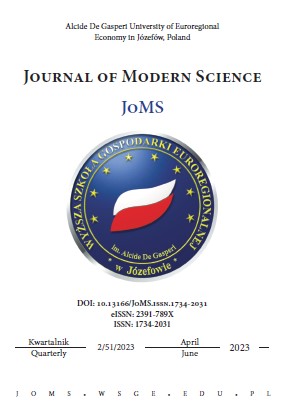THE POWER OF ARCHETYPES IN BUSINESS-TO-CONSUMER RELATIONSHIPS BASED ON THE CONFECTIONERY MARKET IN POLAND
THE POWER OF ARCHETYPES IN BUSINESS-TO-CONSUMER RELATIONSHIPS BASED ON THE CONFECTIONERY MARKET IN POLAND
Author(s): Anna Dewalska-Opitek, Katarzyna Bilińska-Reformat, Aleksandra SzejniukSubject(s): Business Economy / Management, Marketing / Advertising
Published by: Wydawnictwo Akademii Nauk Stosowanych WSGE im. A. De Gasperi w Józefowie
Keywords: archetypes; customer value; Business-to-consumers (B2C) relationships;
Summary/Abstract: Purpose: This paper aims to investigate the extent to which brand archetypes can influence business-to-consumers (B2C) relationship, identify brand archetypes of two Polish confectionary companies (Wedel and Wawel), and recognize consumers’ attitudes towards brand archetypes used in B2C relationships. The conducted research allowed us to find the answers to five research questions. Material and methods: Based on the theoretical deliberation, empirical research was conducted. Two research methods were applied in the study, i.e., a multiple case study method as a form of qualitative research, and a survey conducted in May 2023 using Computer Assisted Web Interviewing (CAWI) on a sample of 106 respondents. The brand attitudes perceived by respondents formed the basis for the Brand Archetype Portrait (BAPOR) and Brand Archetype Power (BAPOW). Results: The conducted analysis revealed the use of different archetypes by both research subjects. Customers were aware of the brand archetypes, and they identified the archetypes accordingly, allowing the indication of the brand archetype portraits (BAPOR). Wedel was associated with the Innocent archetype, while Wawel was associated with the Caregiver and Jester by survey participants. Conlusions: This study addresses the scientific gap centered on integrating and exploring archetypes within the specific context of business-to-consumer relationships in the confectionery market in Poland. Additionally, there is a gap in understanding how the use of archetypes can influence the dynamics of business-to-consumer relationships within the confectionery market. The study findings are constrained by several limitations: only two case studies representing the same business sector were examined. Moreover, the quantitative research was conducted on a small and unrepresentative sample and thus does not allowing for drawing any general conclusions. However, the research in question provided insights into customers’ opinions and attitudes toward brand archetypes. The aforementioned limitations leave room for future studies.
Journal: Journal of Modern Science
- Issue Year: 51/2023
- Issue No: 2
- Page Range: 375-404
- Page Count: 30
- Language: English

